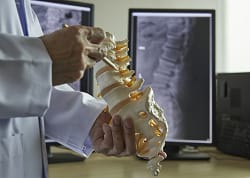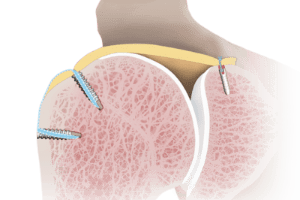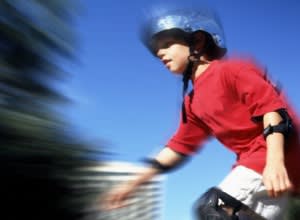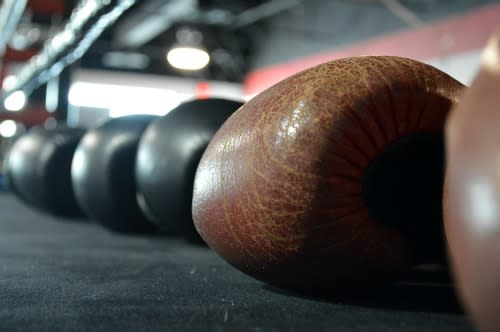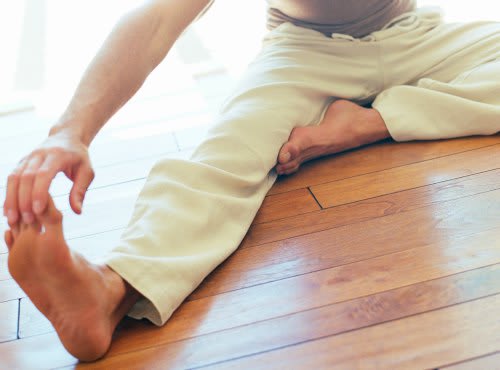By Edward Feliciano, MD, FAAOS
Shoulder pain is often the result of an activity that involves an excessive and repetitive overhead motion, which can ultimately cause damage to the bones, ligaments, tendons and cartilage. Many athletes, including weightlifters, swimmers and lacrosse or baseball players, are prone to this type of injury. However, issues can also arise from everyday activities at home or work such as overhead painting, hanging curtains or gardening.
Athletes in their teens and 20s may experience a noticeable decrease in performance, such as a slower pitching speed, when plagued with a shoulder injury. Adults, who are 40 or older, will likely have a tougher time completing daily tasks such as getting dressed or reaching for dishes on a high shelf. Adults experiencing persistent pain may be suffering from rotator cuff tendonitis, or inflammation in one or more of the tendons that connect the four rotator cuff muscles to the bones, a common condition.
Many of the symptoms for the conditions that cause shoulder pain are similar, and generally occur gradually. Additional warning signs for shoulder injuries include tenderness to touch, loss of motion, increased pain when lifting or reaching above shoulder level, swelling or inflammation in the shoulder or pain while lying on the shoulder when sleeping.
If shoulder pain occurs unexpectedly and is related to the neck or arm in motion, it is possible the patient may actually be experiencing referred pain. Referred pain means that a condition exists elsewhere in the body, yet the symptoms are manifesting in the shoulder. In some instances, neck, back or heart issues can manifest as shoulder pain because of the way the nerve signals travel between those areas. In this case, a physician should be consulted immediately.
An athlete who is experiencing shoulder pain may ice the area following each game or practice. If the pain persists or there is more concern, it is important to stop or limit the movement that causes pain and see a physician for an evaluation. In addition to over-the-counter anti-inflammatories to keep swelling down, a physician may recommend some exercises to increase the strength and stability of the shoulder.
If rest, ice, medication and physical therapy are still not relieving the pain, X-rays or an MRI will usually be scheduled for further evaluation. X-rays show the bones and may give clues about other structures in the shoulder, while the MRI gives more detail about all structures in the shoulder. If the MRI shows a tear in the ligaments, tendons, rotator cuff or labrum, arthroscopic surgery can be performed to repair the damage. Arthroscopic surgery refers to a procedure that uses a tiny camera, or arthroscope, to examine and repair the tissues inside or around the shoulder joint.
Recovering from arthroscopic surgery can range from one to six months and will most likely require the use of a sling for part of that time. Depending on the extent of the tear and repair needed, it takes younger athletes approximately six months to one year to resume their sport at full speed. It typically takes older adults at least six months to return to full function. During this time, patients will have limited use of the arm but will be able to complete most daily tasks.
Physical therapy is also an integral part of regaining motion and strength in the shoulder. A therapist can develop a targeted program, and the length of therapy will depend on the extent of the repair.
Shoulder pain is often the result of an activity that involves an excessive and repetitive overhead motion, which can ultimately cause damage to the bones, ligaments, tendons and cartilage. Many athletes, including weightlifters, swimmers and lacrosse or baseball players, are prone to this type of injury. However, issues can also arise from everyday activities at home or work such as overhead painting, hanging curtains or gardening.
Athletes in their teens and 20s may experience a noticeable decrease in performance, such as a slower pitching speed, when plagued with a shoulder injury. Adults, who are 40 or older, will likely have a tougher time completing daily tasks such as getting dressed or reaching for dishes on a high shelf. Adults experiencing persistent pain may be suffering from rotator cuff tendonitis, or inflammation in one or more of the tendons that connect the four rotator cuff muscles to the bones, a common condition.
Many of the symptoms for the conditions that cause shoulder pain are similar, and generally occur gradually. Additional warning signs for shoulder injuries include tenderness to touch, loss of motion, increased pain when lifting or reaching above shoulder level, swelling or inflammation in the shoulder or pain while lying on the shoulder when sleeping.
If shoulder pain occurs unexpectedly and is related to the neck or arm in motion, it is possible the patient may actually be experiencing referred pain. Referred pain means that a condition exists elsewhere in the body, yet the symptoms are manifesting in the shoulder. In some instances, neck, back or heart issues can manifest as shoulder pain because of the way the nerve signals travel between those areas. In this case, a physician should be consulted immediately.
An athlete who is experiencing shoulder pain may ice the area following each game or practice. If the pain persists or there is more concern, it is important to stop or limit the movement that causes pain and see a physician for an evaluation. In addition to over-the-counter anti-inflammatories to keep swelling down, a physician may recommend some exercises to increase the strength and stability of the shoulder.
If rest, ice, medication and physical therapy are still not relieving the pain, X-rays or an MRI will usually be scheduled for further evaluation. X-rays show the bones and may give clues about other structures in the shoulder, while the MRI gives more detail about all structures in the shoulder. If the MRI shows a tear in the ligaments, tendons, rotator cuff or labrum, arthroscopic surgery can be performed to repair the damage. Arthroscopic surgery refers to a procedure that uses a tiny camera, or arthroscope, to examine and repair the tissues inside or around the shoulder joint.
Recovering from arthroscopic surgery can range from one to six months and will most likely require the use of a sling for part of that time. Depending on the extent of the tear and repair needed, it takes younger athletes approximately six months to one year to resume their sport at full speed. It typically takes older adults at least six months to return to full function. During this time, patients will have limited use of the arm but will be able to complete most daily tasks.
Physical therapy is also an integral part of regaining motion and strength in the shoulder. A therapist can develop a targeted program, and the length of therapy will depend on the extent of the repair.
Featured Expert/ Author







